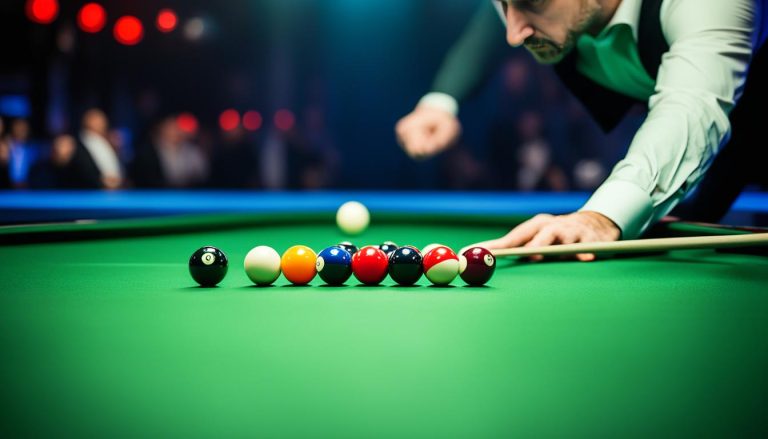Welcome to our comprehensive guide on how to play badminton! Whether you’re a novice looking to learn the basics or someone wanting to up their game, this article will provide you with all the necessary information and techniques to excel in this exciting racket sport.
Badminton is a thrilling game that can be played by two players or two teams of two players each. The objective of the game is to score 21 points before your opponents do. It is played on a court that measures 44 feet long and 20 feet wide, with specific rules and regulations that players must follow.
In this article, we will take you through everything you need to know, from understanding the object and rules of badminton to mastering different shots and improving your skills and techniques. By the end of this guide, you’ll have the knowledge and confidence to take your badminton game to the next level.
To get started, let’s dive into section 2, where we will explore the object and rules of badminton in more detail.
Understanding the Object and Rules of Badminton
In order to play badminton effectively, it is important to understand the object and rules of the game. The object of the game is to score 21 points before your opponents. Points are scored by successfully serving the shuttlecock and forcing your opponents to commit faults. There are various faults that can occur, such as hitting the shuttlecock into the net or out of bounds. The game is played in a match format, with the first team to win two games winning the match.
To ensure fair play and maintain the integrity of the game, badminton has set rules and regulations that players must adhere to. Understanding these rules is crucial for both beginners and experienced players. Let’s take a closer look at the key aspects:
Serving
The game starts with a serve, where the shuttlecock is hit from below the waist and diagonally over the net to the opponent’s side of the court. The serve must be made from the right half of the court, and it must pass over the net into the diagonally opposite service court.
Scoring
Points are earned when the serving side wins a rally. A rally is won by successfully hitting the shuttlecock over the net and landing it inside the boundaries of the opponent’s court. The serving side continues to score points as long as they win rallies.
Faults
In badminton, faults can occur when a player violates the rules of the game. Common faults include hitting the shuttlecock into the net, hitting it out of bounds, or touching the net with the racket or body. Committing a fault results in the opponent being awarded a point and the right to serve.
Game and Match Format
Badminton matches are played in a best-of-three-games format. The first team to win two games wins the match. Each game is played to 21 points, with a two-point advantage required to win. If the score reaches 20-20, the game continues until one team has a two-point advantage.
The Table Below Summarizes the Badminton Scoring System:
| Scoring System | Result |
|---|---|
| 21-0 | Game won by serving team |
| 21-1 to 21-19 | Game won by serving team |
| 20-20 | Game continues until one team has a two-point advantage |
Understanding the rules and nuances of badminton is essential for players of all skill levels. By familiarizing yourself with the object of the game, scoring system, faults to avoid, and match format, you can enhance your playing experience and enjoy the thrill of competing on the badminton court.

Getting Familiar with the Badminton Court
Before diving into the exciting world of badminton, it is essential to familiarize yourself with the court and its dimensions. Understanding the court layout and key areas will help you navigate the game with ease.
The standard badminton court is rectangular, measuring 44 feet in length and 20 feet in width. However, if you’re playing singles, the court is slightly narrower, spanning 17 feet in width. To get a complete visual representation of the court, take a look at the diagram below:
As you can see, the net is positioned at the very center of the court, dividing it into two equal halves. The height of the net is 5 feet and positioned higher in the middle than at the edges. This elevation creates a slight slope to ensure fair gameplay and challenge players to adjust their shots accordingly.
Within the court, there are specific service courts on each side of the net. These areas are used for serving the shuttlecock and must be respected during gameplay. In doubles matches, an additional area called the “doubles sideline” comes into play. This extra space on the left and right sides of the court allows for wider shots and strategic placement.
Key Dimensions
To summarize, here are the key dimensions of a badminton court:
| Format | Length | Width |
|---|---|---|
| Singles | 44 feet | 17 feet |
| Doubles | 44 feet | 20 feet |
| Net Height | 5 feet (higher in the middle) | |
Now that you have a good understanding of the badminton court and its dimensions, you’re ready to move on to the next section. Stay tuned for more exciting insights on the rules and techniques of the game!
Understanding the Basics of How to Play Badminton
Before delving into the world of badminton, it’s essential to grasp the fundamental aspects of the game. Familiarizing yourself with the badminton basics will enable you to kick-start your journey on the right foot. Let’s explore the key elements that form the foundation of every badminton match.
Team and Court Setup
A typical badminton game consists of two teams, each comprising either one player (singles) or two players (doubles). The court itself is 44 feet long and 20 feet wide for singles matches, while it becomes 44 feet long and 17 feet wide for doubles matches. The net is positioned at the center of the court, dividing it into two equal halves.

Serve and Receiving
Now, let’s delve into the serving aspect of badminton. Before the match begins, a coin toss or contest determines which team will serve first and choose their side of the court. The initial serve is made from the right half of the court to the diagonally opposite side. The serving team should ensure the shuttlecock is struck below the waist level. If the server fails to execute a proper serve, it’s considered a fault, resulting in a point for the opposing team.
Once the first serve is successful, the serving team scores a point and gets ready to serve again from the opposite half of the court. Points continue to be earned after each successful serve. The serving team will alternate sides depending on their score, ensuring a fair and balanced play between both teams.
Scoring and Switching Sides
The scoring system in badminton is relatively straightforward. A team is awarded a point when their opponents commit a fault, such as hitting the shuttlecock out of bounds. The team that wins a point gets to serve again.
After each game, teams switch ends of the court, ensuring equal opportunity for all players. The winner of the previous game has the privilege to serve at the start of the next game. This switching of sides between games adds an element of fairness and balances out any potential court advantages.
To summarize, comprehending the basics of play in badminton is crucial for a successful start in the game. From team setup to serving, receiving, scoring, and switching sides, each aspect contributes to a fair and enjoyable experience on the court.
Mastering the Different Types of Shots
In order to excel at badminton, it is important to master different types of shots. The main shots in badminton are the forehand and backhand, similar to playing tennis. It is essential to have good footwork and positioning to effectively strike the shuttlecock. Some of the key shots to learn are the clear shot, which moves your opponent away from the net, the drop shot, which falls just over the net and makes it hard for your opponent to reach, and the smash shot, which is a powerful shot hit above the height of the net.
Forehand Shot
The forehand shot is one of the most common shots in badminton. It is executed by swinging the racket in a forward motion, with the shuttlecock being hit on the front side of the body. The forehand shot provides versatility and control, allowing players to direct the shuttlecock precisely.
Backhand Shot
The backhand shot is performed by swinging the racket across the body, with the shuttlecock being hit on the backside of the body. While it may be more challenging to master than the forehand shot, the backhand shot is essential for covering shots on the opposite side of the body. Practice and proper technique are key to developing accuracy and power in the backhand shot.
Clear Shot
The clear shot is a defensive shot used to push the shuttlecock deep into the opponent’s court. It is executed by hitting the shuttlecock high in the air, causing it to travel the full length of the court. This shot is effective in creating distance between the players and allowing time for recovery or setting up an offensive shot.
Drop Shot
The drop shot is a deceptive shot that requires finesse and control. It involves hitting the shuttlecock softly, causing it to fall just over the net into the opponent’s court. The drop shot is useful in forcing your opponent to move quickly and reach low to retrieve the shuttlecock, putting them at a disadvantage and setting up opportunities for a follow-up shot.
Smash Shot
The smash shot is a powerful and aggressive shot that aims to hit the shuttlecock downwards with maximum force. It is executed by swinging the racket in an overhead motion and making contact with the shuttlecock at its highest point. The smash shot is challenging to defend against due to its speed and steep angle, making it an effective offensive weapon.
Improving Your Skills and Techniques
To become a skilled badminton player, you must focus on developing various aspects of your game. Here are some key areas to work on:
Speed
Speed is a crucial factor in badminton. To enhance your agility and speed on the court, consider incorporating the following into your training routine:
- Jogging: Regular jogging sessions can improve your cardiovascular endurance and help you maintain stamina during matches.
- Walking: Engage in brisk walking to enhance your overall fitness and build endurance.
- Shadow badminton: Practice executing shots and footwork without an opponent. Visualize an imaginary opponent and simulate game scenarios to improve your reaction time and speed.
Flexibility
Flexibility plays a vital role in executing precise shots and maneuvering around the court effortlessly. Consider incorporating the following flexibility exercises into your training program:
- Yoga: Regular yoga practice can improve your range of motion and enhance your flexibility. Focus on poses that target the lower body, such as lunges and pigeon pose.
- Stretching: Prioritize stretching exercises before and after training sessions to warm up your muscles and prevent injuries.
Grip
A proper grip is essential for generating power and control in your shots. Familiarize yourself with the correct grip techniques for both forehand and backhand shots. Experiment with different grips and find the one that feels most comfortable and natural for you. Here is a simple guide to different badminton grips:
| Grip | Description |
|---|---|
| Forehand Grip | Hold the racket handle as if you are shaking hands with it. The base knuckle of your index finger should be pressed against the back of the racket, creating a V-shape with the thumb and index finger. |
| Backhand Grip | Place your thumb at the back of the racket handle, with the index finger wrapping around the other side. This grip allows for better control and maneuverability for backhand shots. |
By focusing on speed, flexibility, and mastering the proper grip, you can enhance your badminton skills and techniques. Incorporate these strategies into your training routine to elevate your game to the next level.
Conclusion
In conclusion, understanding the rules and techniques of badminton is crucial for players looking to improve their skills and elevate their game. By following proper techniques and practicing regularly, players can progress from being novices to becoming professionals in the sport. With a focus on good footwork, strategic shot selection, and overall game strategy, players can not only enjoy the sport but also achieve success on the badminton court.
Playing badminton requires mastering various shots such as the forehand, backhand, clear shot, drop shot, and smash shot. It is also important to work on key skills like speed, flexibility, and grip to enhance performance. Incorporating exercises like jogging, walking, and shadow badminton can help improve speed, while practicing yoga can enhance flexibility and control. Understanding the proper grip for forehand and backhand shots is essential for hitting powerful and accurate shots on the court.
Overall, badminton is a dynamic and exciting sport that offers numerous benefits, including physical fitness, enhanced coordination, and improved mental focus. By dedicating time and effort to learning the game and honing their skills, players can fully enjoy the sport and progress to a high level of play. Whether playing casually for fun or competing at a professional level, badminton provides an engaging and rewarding experience for players of all ages and skill levels.






